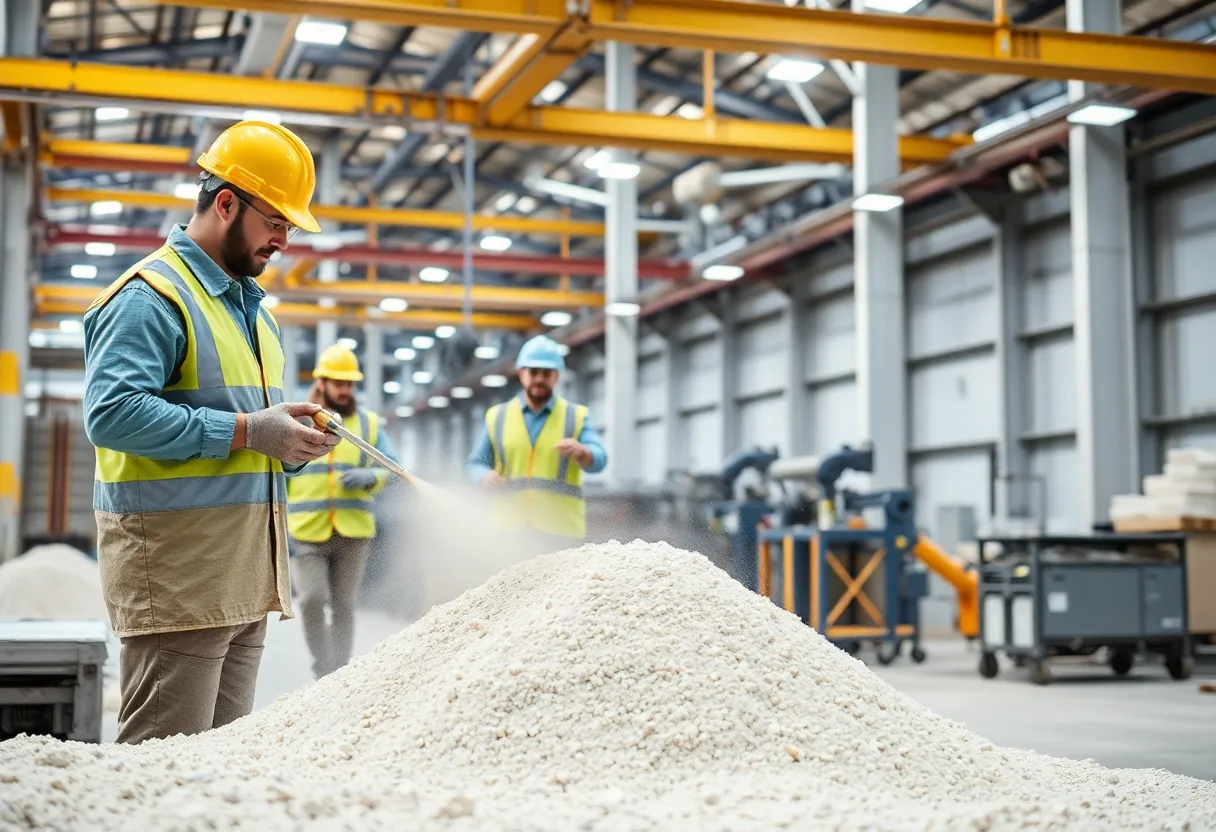News Summary
Rising Concerns Over Silicosis Compensation Claims in the UK
In a worrying trend that mirrors the past fallout over asbestos, the UK is now grappling with an upward trajectory of silicosis compensation claims. As the Health and Safety Executive (HSE) ramps up enforcement and awareness, industry insiders are sounding alarm bells about the rising incidence of this incurable occupational lung disease.
Understanding Silicosis: An Incurable Disease
Silicosis, caused by inhaling respirable crystalline silica dust, poses severe health risks, particularly in industries where exposure is prevalent. Workers in construction, mining, foundries, glass manufacturing, and notably stone fabrication, are at the highest risk. This disease can manifest in three forms: chronic, accelerated, and acute, each with its progression that continues even after the cessation of exposure.
Engineered stone, increasingly popular in kitchen and bathroom countertops, heightens the risks. With silica content surpassing 90%, the use of this material has drawn attention, especially given a staggering 700% increase in engineered stone imports to the US between 2010 and 2019. Improper fabrication processes can unleash hazardous levels of silica dust, calling for urgent attention from industry leaders and regulators alike.
Shifting Dynamics: UK’s Reaction to Rising Silicosis Cases
While silicosis-related claims in the UK have so far been relatively low, with a count of just 35 Industrial Injury Disablement Benefit applications in 2023—a slight increase from previous years—the landscape is changing. Claimant lawyers are now actively pursuing cases, indicating heightened awareness and potential reporting of the disease.
However, comparisons between silicosis and asbestos are currently deemed alarmist. Many experts assert that unlike asbestos exposure, effective controls exist to mitigate risks associated with silica dust. These strategies include dust extraction, wet-cutting techniques, and the use of appropriate respiratory protective equipment.
Precautions and Industry Responsibilities
The HSE is on a mission to educate employers about minimizing exposure risks, particularly in the stone fabrication and kitchen supply industries. This proactive approach includes identifying high-exposure sectors and enforcing stringent compliance with safety regulations to adequately assess risks connected to silicosis.
Additionally, many health professionals are raising concerns about the alarming rise of silicosis cases tied to artificial stone. The first documented UK cases related to this material emerged in 2023, revealing a troubling average patient age of just 34 years. Reports highlight similar trends in countries like Australia, Israel, Spain, and Italy, emphasizing the international nature of the silicosis crisis.
Looking Ahead: Urging Regulatory Changes
Significant recommendations have surfaced, advocating for better protections for workers engaging with artificial stone. Calls for regulatory action to limit exposure are gaining momentum, including a potential reduction in permissible silica dust exposure limits. A recent study suggests that lower thresholds—proposed at 0.05 mg/m3, aligning with the more stringent standards observed in the US—could significantly reduce the incidence of silicosis.
Current UK occupational limits stand at 0.1 mg/m3, comparable with most other European countries. However, the looming threat of escalating cases underscores the urgency for national guidelines, comprehensive monitoring, and robust enforcement, particularly within high-risk environments.
The Global Perspective: Silicosis in Developing Countries
The challenge of silicosis isn’t confined to the UK. Developing nations, often lacking adequate health and safety measures, may bear a heavier burden as global trends shift toward materials like engineered stone. Advocates assert that addressing silicosis—through protective regulations and better workplace practices—will be critical in safeguarding the health of workers both locally and globally.
The Call for Action
As the UK sees the dawn of its silicosis awareness campaign, experts stress that urgent action is necessary to protect workers. With health risks intensifying, the conversation about potential bans on artificial stone within the UK is becoming increasingly pertinent. Ensuring that employees are safeguarded from dangerous silica exposure must be prioritized as new cases continue to surface both in the UK and around the world.
Deeper Dive: News & Info About This Topic
HERE Resources
Middlesex County Library Undertakes Major Asbestos Removal
Asbestos Exposure and Mesothelioma: A Growing Concern for Veterans
The Forgotten Heroes: Veterans’ Battle Against Asbestos Exposure
Federal Proposal Aims to Address Asbestos Risks in Talc-Containing Cosmetics
Thalia Mara Hall’s Reopening Faces New Delays Due to Potential Asbestos Discovery
The Eaton Fire: A Community’s Resilience Amidst Tragedy
The Asbestos Dilemma: A Hidden Threat at Columbia University
Albany County Takes Bold Step with Central Warehouse Purchase
The Great Hockey Stick Heist in Duluth: Mankato West Team’s Torment
The Rising Tide of Asbestos-related Health Crises in Missouri and Beyond
Additional Resources
- The Insurer: Silicosis Risk
- Wikipedia: Silicosis
- The Guardian: UK Urged to Consider Ban on Artificial Stone Worktops
- Google Search: Silicosis
- DW: Why Silica Dust Could Become the New Asbestos Health Risk
- Encyclopedia Britannica: Silicosis
- Personnel Today: Doctors Call for UK Ban on Artificial Stone Worktops
- Google News: Silicosis



















